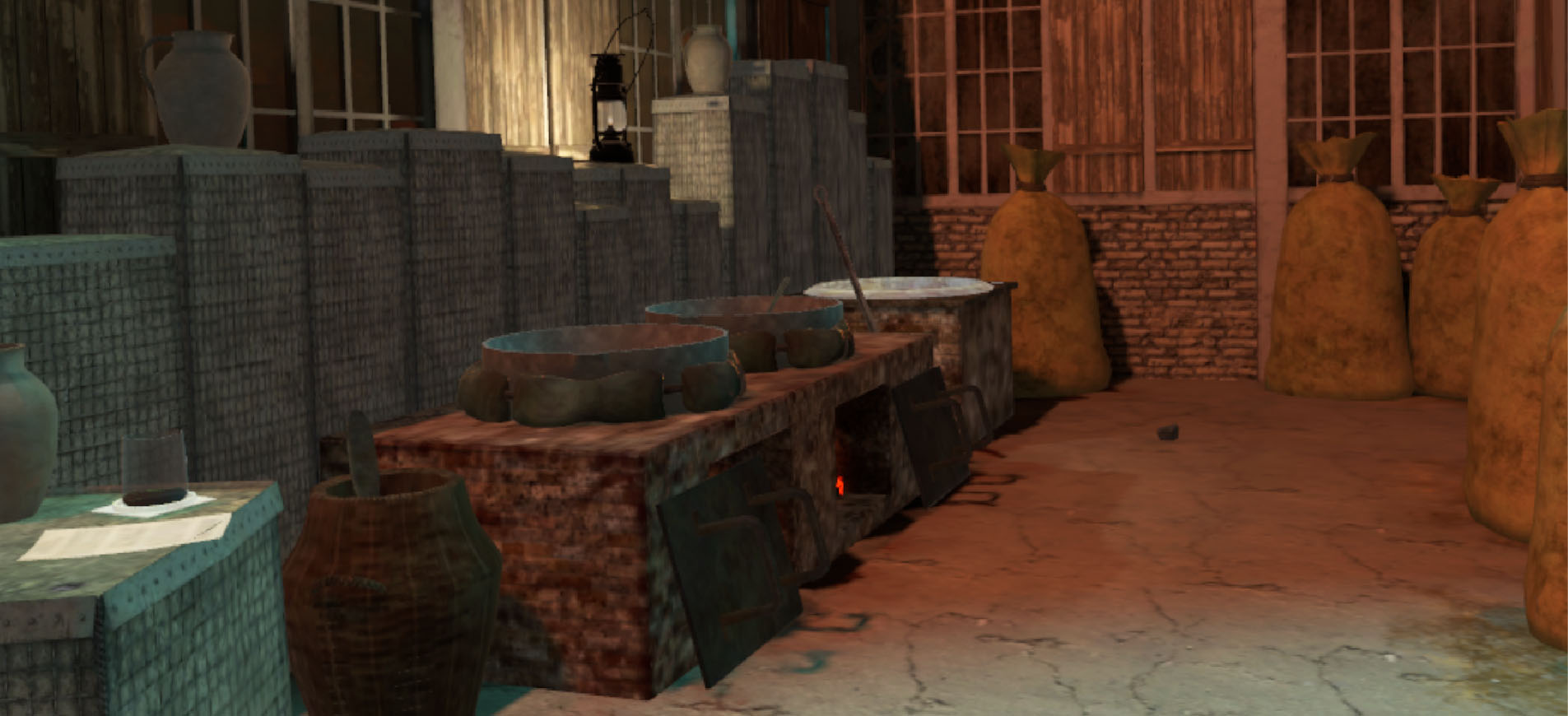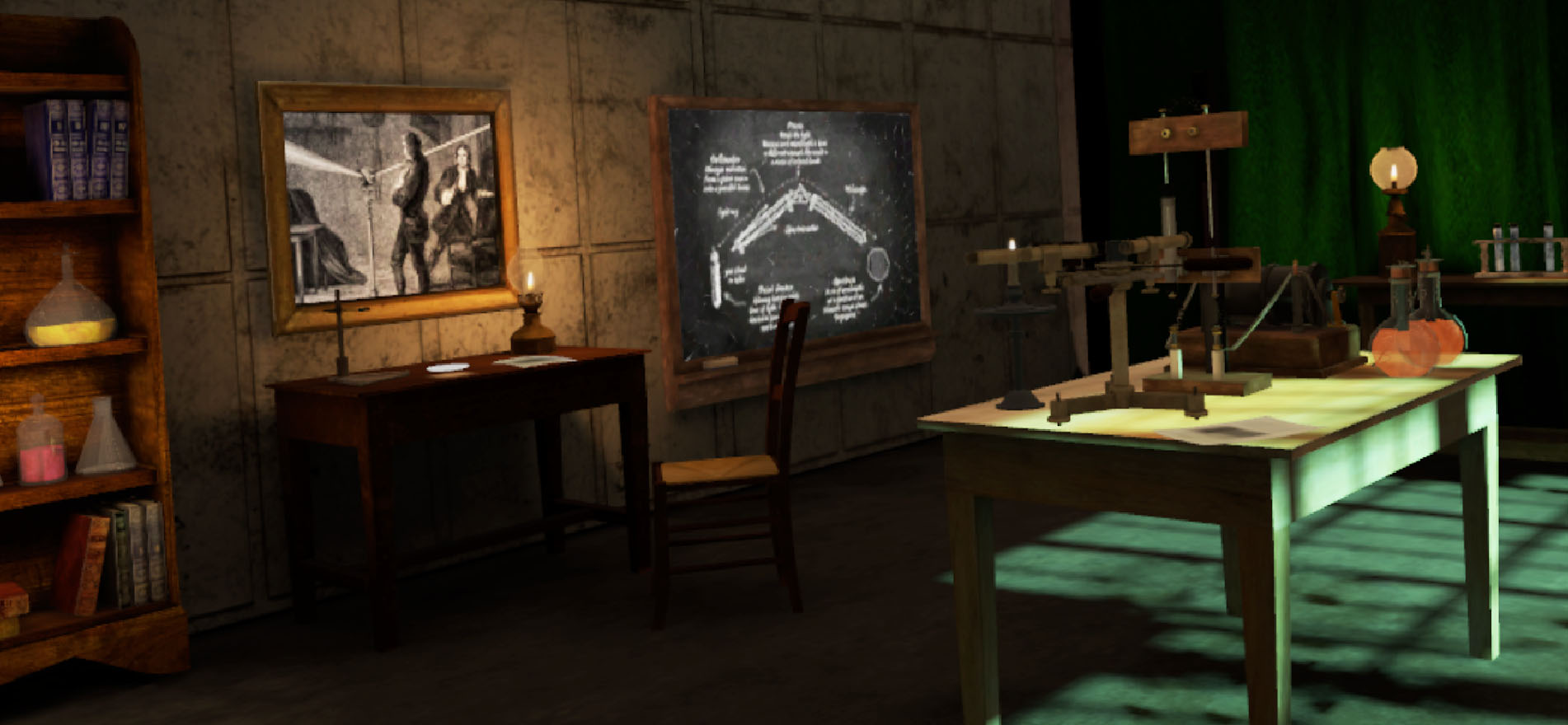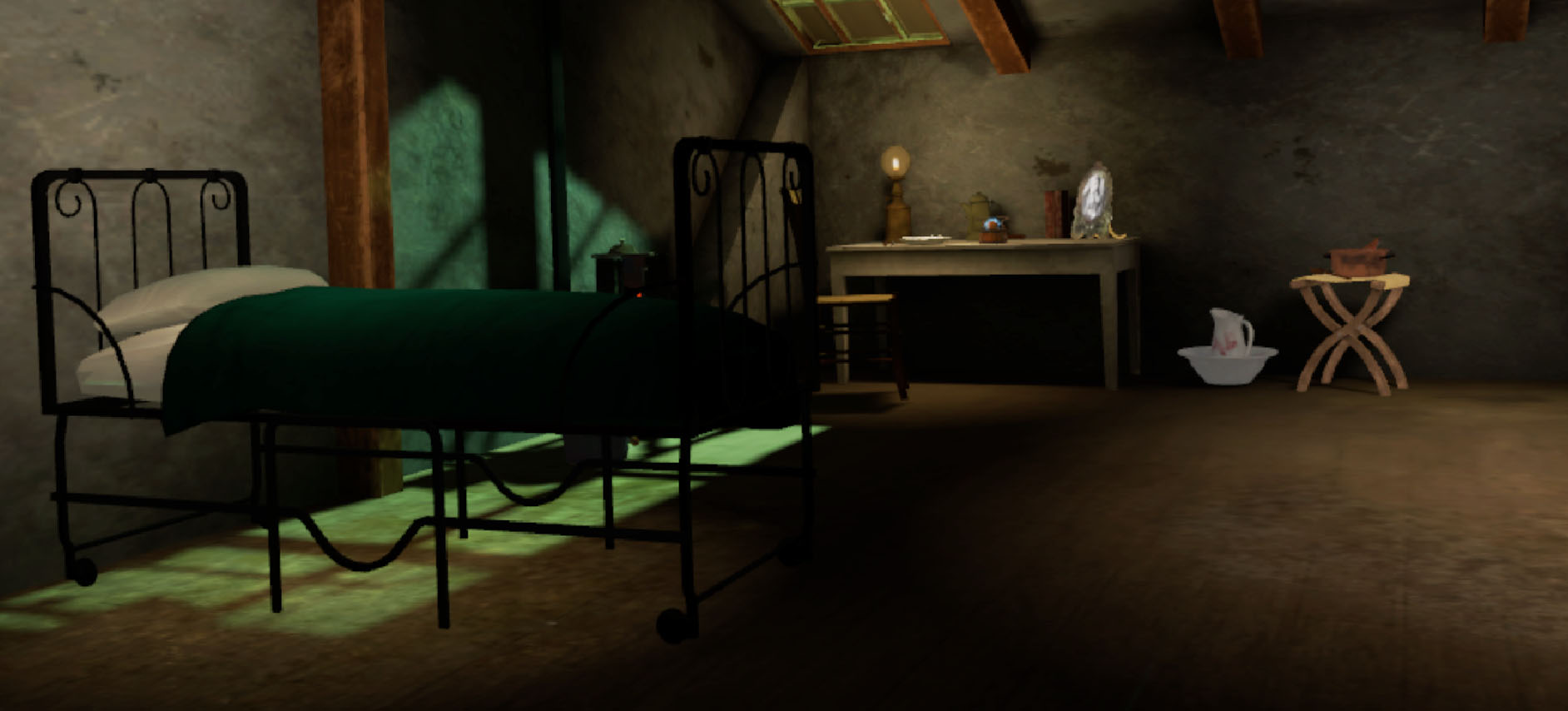M CURIE | GOLDEN TOAD | SCULPTING | SPINOOCHI | SMASHERS | THE RED FLUTE | SHOCKWAVES | THE ARK | GHOSTS OF CAMP X | NUMEROLOGY VR | XR LAB | TIMEWAVE | BRAVE NEW WORLD | KPE | VELOCITY LAB | THE IMPOSTOR | BLACKWATER | SIRE | GLOBAL THEATRE

At the turn of the twentieth century, Madame Curie was awarded a Nobel Prize in Physics. Eight years later, she won a second Nobel Prize in chemistry for work in radioactivity. Curie’s scientific journey was not a smooth ramp up but one laden with substantial hurdles. Raised in Russian-occupied Warsaw, Curie spent six years working as a governess to pay for her studies at the Sorbonne. While at university, Marie had all the cards stacked against her – poor, a foreigner and a woman. And yet, she prevailed.
In M. Curie, trek back in time and step into Marie Curie’s shoes. While she tells you her life story, engage with 19th century physics and chemistry apparatus, such as an electroscope, electrometer and spectroscope, to find what she unearthed: new elements that emitted strange invisible rays with no known source of energy. Solve puzzles that unlock special items. Feel the wonder, determination and joy of a woman who overcame adversity to become one of the world’s greatest scientists.
Finalist for Best Immersive Interactive VR and Official Selection, Qld XR Festival, 2023.
Official Selection, Festival of International Virtual and Augmented Reality Stories, FIVARS 2023
M. Curie trailer
https://www.youtube.com/watch?v=0QIz4WurjEk
Buy M. Curie on the Meta Horizon Store: https://www.meta.com/experiences/m-curie/7616724141790253/
M Curie: “We had no money, no laboratory and no help in the conduct of this important and difficult task. It was like creating something out of nothing…
And yet it was in this miserable old shed that the best and happiest years of our life were spent, entirely consecrated to work. I sometimes passed the whole day stirring a mass in ebullition, with an iron rod nearly as big as myself. In the evening I was broken with fatigue.”
When German chemist Wilhelm Ostwald visited Curie’s lab, he described the place as being “a cross between a stable and a potato shed, and if I had not seen the worktable and items of chemical apparatus, I would have thought that I was been played a practical joke.
The courtyard (image right) was the only place where Marie could break down pitchblende ore in vats of acid. She depended on ambient air to disperse the poisonous fumes of her task.
M Curie was fortunate to work underneath the lab of Eugene Demarçay (image right) , an expert in the field of spectroscopy.
By heating an element into a gas and then refracting the light it emitted through a prism, Demarçay could analyze the spectra or pattern of light. Several elements had been discovered via this method.
In December 19, 1898, Marie produced a substance whose radioactivity was 900 times greater than uranium. She raced up one flight of stairs to find Demarçay.
On that fateful day, he detected one unique spectral line. A notation in the Curies’ journal read: “Radium.”
While studying in Paris, Marie chose to live in the Latin Quarter close to the Sorbonne.
Given a budget of 15-20 francs per month, she would rent the attic of a middle-class house (image right).
Marie brought her furnishings from Poland, which included an iron folding bed, portable stove (alcohol heater), oil lamp, wooden table, chair, pitcher, stewpot and kettle.
A large brown trunk served as both a wardrobe and additional seating space.



